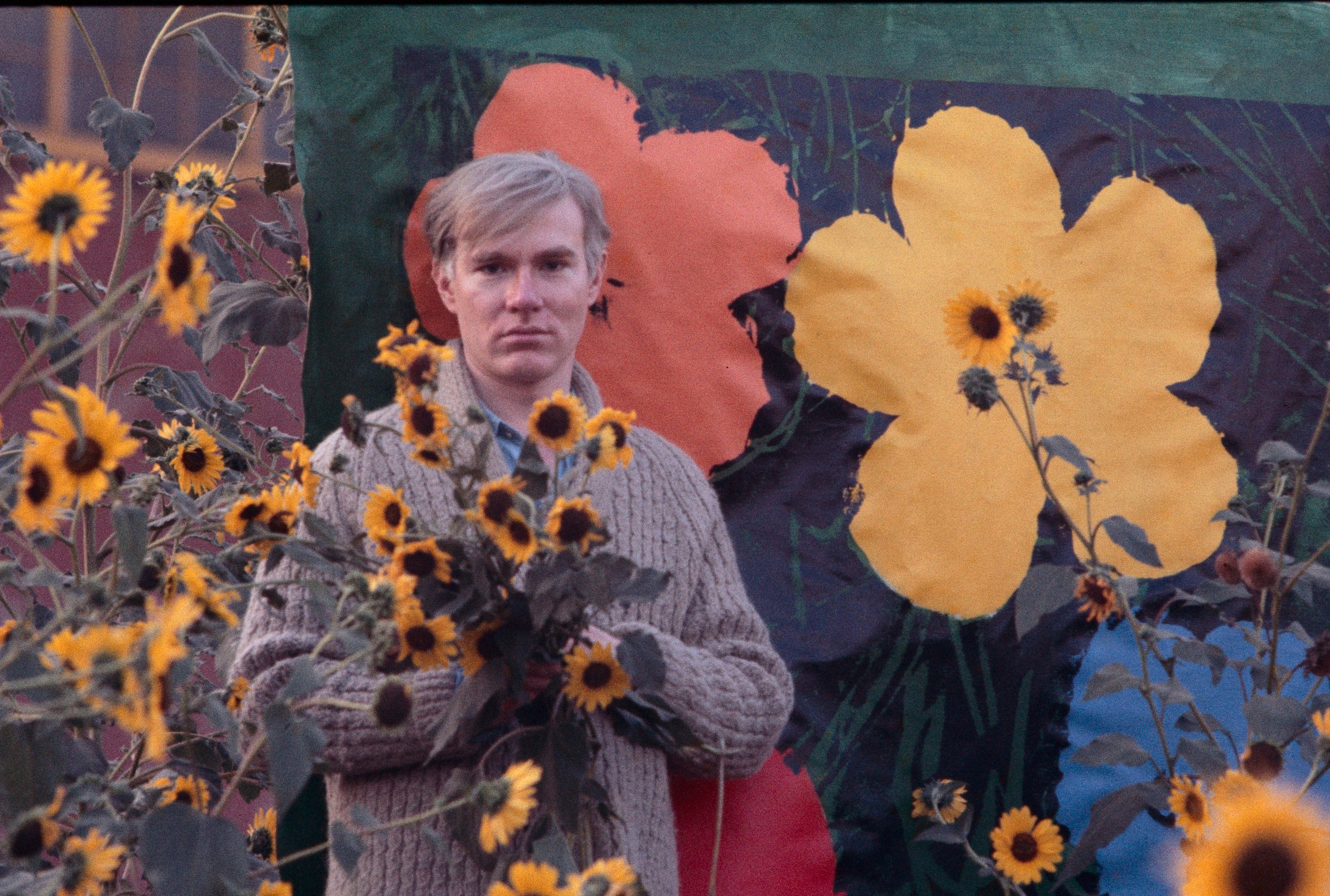
When he lived in New York in the 1960s, William John Kennedy may have made his living as an advertising and commercial photographer, but he also had a fine art practice. A new show highlights yet another dimension of his career: a previously unexhibited trove of photos showing two giants of Pop art, Andy Warhol and Robert Indiana, in unguarded moments in their studios, posing with some of their most recognizable works, and at the openings of New York exhibitions.
Robert Indiana photographed in his studio by William John Kennedy.
Kennedy’s central London residence is now a showcase for his photographs of the artists from 1963 and 1964, when they were both early in careers that would go on to help define contemporary art.
Kennedy (who died in 2021) met Indiana at the opening of the latter’s first New York solo show, and soon began photographing him at his studio in the legendary Coenties Slip neighborhood. Indiana then connected Kennedy with Warhol at the “Americans 1963” exhibition at the Museum of Modern Art (in which Indiana was included).
Andy Warhol and Robert Indiana, photographed by William John Kennedy.
Kennedy would soon bring his camera to Warhol’s legendary Factory and photograph him and the people around him, including poet Gerard Malanga, “Superstar” Ultra Violet, and writer Taylor Mead. Kennedy had ideas like photographing Warhol standing in a field of flowers with his paintings of the same subject.
Robert Indiana, photographed by William John Kennedy.
Former Warhol Museum director Eric Shiner noted a special quality to the photos of the father of Pop. “The Kennedy photos are perhaps the most intimate portraits of Andy that I have ever seen,” he said. “They capture him at the point of his arrival as a true art star and yet he remains his humble, fun-loving, playful self in each frame. They humanize him in a way that few photos do, and if anything, they add to the mythology of Warhol as the benevolent, happy person that he truly was, and yet is rarely celebrated as.”
Andy Warhol, photographed by William John Kennedy.
One striking photo shows Warhol in his studio, holding up a piece of clear plastic printed with the image of Marilyn Monroe that would come to emblazon some of his most famous works.
Another former Warhol Museum director, Patrick Moore, pointed out the poetic dimension of the photo: “In the image, Warhol stands in the Factory, sunlight flooding through the window, illuminating him as he holds aloft the acetate of Marilyn Monroe that would later make some of his most famous paintings. Here we see Warhol in a new way—young, triumphant, about to conquer the art world through transforming the images of movie stars that were his childhood refuge. We literally see Warhol through his art.”
Robert Indiana, photographed by William John Kennedy.
Kennedy seemed to have a special effect on Warhol, the photographer’s wife Marie told the Guardian in 2022, when some of the photographs were published in a book, William John Kennedy: The Lost Archive.
“Andy, of course, was this strange bird,” she said. “When I was in his company, he was very shy, you had to draw him out. But he was much more relaxed with Bill. Bill came up with all these ideas for pictures—getting Andy to wear paintings like sandwich boards or pose behind the acetate for his Marilyn Monroe screen prints—and Andy always went along with him.”
Marie Kennedy told the Guardian that during a move from New York to Florida, Kennedy almost threw the photos away.
Robert Indiana, photographed by William John Kennedy.
A photo of Indiana with his best-known work, Love, which has become one of the world’s most-reproduced artworks, resulted from a call that came in with no notice, the photographer recalls: “He said, ‘Bill, come on down I want to show you something.’ So I went down to the studio and there he was, holding his Love painting.”
“When I look back on my involvement with the Pop artists, it all came off my initial involvement with Robert Indiana,” said Kennedy. “He was the linchpin.”